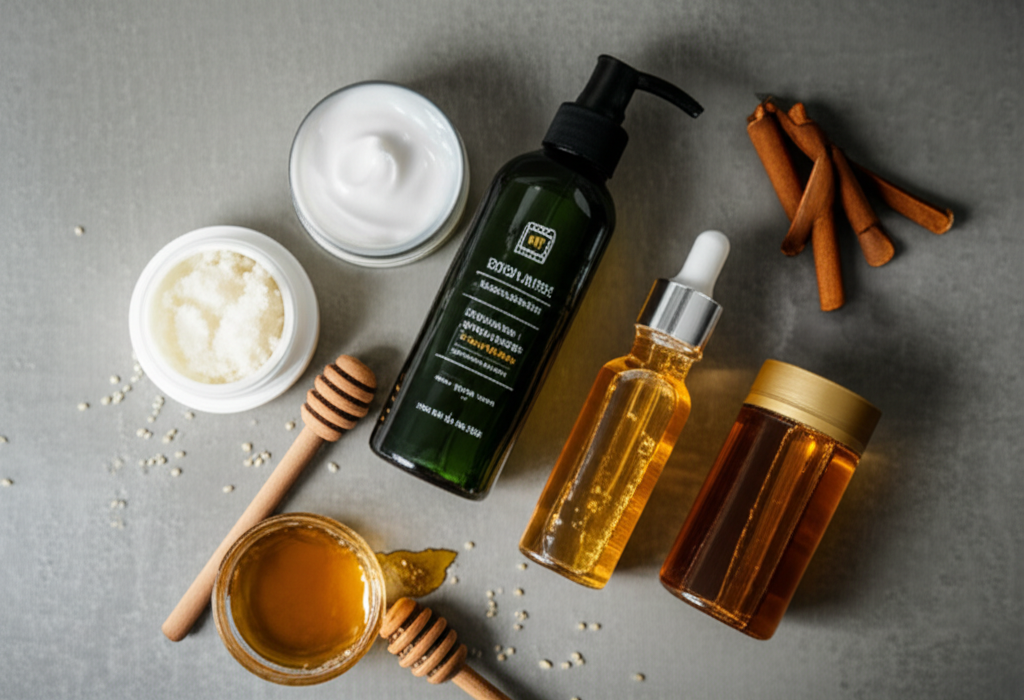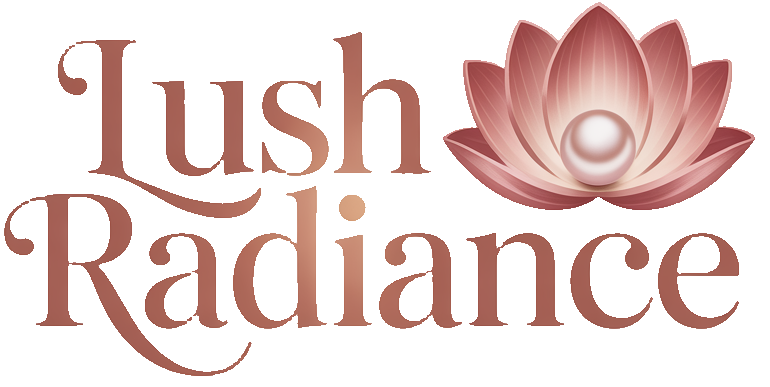Korean Skin Care For Dry Skin – Korean skincare for dry skin focuses on hydration, gentle cleansing, and barrier repair. Embrace a multi-step routine with hydrating toners, essences, serums, and rich moisturizers. Look for ingredients like hyaluronic acid, ceramides, and snail mucin to quench thirsty skin and restore its natural glow.
Do you ever look in the mirror and notice your skin feels tight, flaky, or just plain thirsty? If dry skin has you feeling less than radiant, you’re definitely not alone. Many of us struggle with that uncomfortable feeling, wishing for a softer, dewier complexion. It can be frustrating trying to find products that actually work without making things worse. But what if I told you there are simple, effective secrets from Korea that can transform your dry skin? Get ready to say goodbye to tightness and hello to a healthy, hydrated glow!
The Magic of Korean Skincare for Your Dry Skin Journey

Korean skincare, often called K-beauty, has taken the world by storm, and for good reason! It’s celebrated for its innovative approach to achieving dewy, glowing skin through a focus on health and gentle care. For those battling dryness, K-beauty offers a treasure trove of solutions. The philosophy centers around nurturing the skin’s natural barrier and infusing it with deep, lasting hydration. This isn’t about harsh treatments; it’s about a thoughtful, consistent routine that works with your skin. We’ll uncover the essential secrets to help your dry skin feel comfortable, supple, and beautifully revitalized. Let’s dive into how you can unlock that coveted Korean glow!
Why Does My Skin Get So Dry? Understanding the Culprits
Before we jump into the routines and products, it’s helpful to understand why your skin might be feeling dry. Dry skin, also known as xerosis, isn’t just about lacking moisture; it’s often about a compromised skin barrier. The skin barrier, or stratum corneum, is like the protective outer layer that keeps moisture in and irritants out. When this barrier is damaged, your skin can lose water easily, leading to that dry, tight, and sometimes itchy feeling.

Several factors can contribute to dry skin:
- Environment: Cold weather, low humidity (like in heated rooms or dry climates), and strong winds can strip moisture from your skin.
- Skincare Habits: Using harsh soaps, over-exfoliating, or using products with drying alcohols can damage your skin barrier.
- Genetics: Some people are naturally predisposed to having drier skin.
- Age: As we age, our skin naturally produces less oil, which can lead to increased dryness.
- Health Conditions: Certain medical conditions like eczema, psoriasis, and hypothyroidism can cause dry skin.
- Dehydration: Not drinking enough water can affect your skin’s hydration levels from the inside out.
Understanding these causes helps us choose the right K-beauty strategies to combat dryness effectively. The goal is to replenish lost moisture and strengthen that all-important skin barrier.
The 10-Step Korean Skincare Routine: A Dry Skin Makeover
The famous 10-step Korean skincare routine might sound daunting, but when adapted for dry skin, it becomes a deeply hydrating ritual. For dry skin, the focus shifts slightly, emphasizing gentleness and layering of moisture-rich products. You don’t have to do all ten steps every single day, especially when you’re starting out. Think of it as a buffet of options, and you choose what your skin needs most. Here’s how to adapt the routine for ultimate hydration:
Step 1: Oil-Based Cleanser (The First Cleanse)
This might seem counterintuitive for dry skin – isn’t oil supposed to make things dry? Not at all! Oil cleansers are fantastic because “like dissolves like.” They effectively break down oil-based impurities like makeup, sunscreen, and excess sebum without stripping your skin’s natural oils. For dry skin, choose an oil cleanser that is mild and nourishing.
- How to use: Apply to dry skin and gently massage in circular motions. Add a little water to emulsify (it will turn milky), massage again, and then rinse thoroughly with lukewarm water.
- Key Ingredients to look for: Squalane, Jojoba Oil, Olive Oil, Chamomile Oil.
Step 2: Water-Based Cleanser (The Second Cleanse)
After the oil cleanser, a gentle water-based cleanser removes any remaining residue and impurities. For dry skin, it’s crucial to use a low-pH, hydrating cleanser that won’t leave your skin feeling tight or stripped. Avoid foaming cleansers with sulfates (SLS/SLES) as they can be too harsh.
- How to use: Lather a small amount with water and gently massage onto your damp face. Rinse thoroughly with lukewarm water. Pat your skin dry with a soft towel – don’t rub!
- Key Ingredients to look for: Glycerin, Hyaluronic Acid, Ceramides, mild non-ionic surfactants.
Step 3: Exfoliation (Gentle & Infrequent)
Dry skin doesn’t need aggressive exfoliation. Over-exfoliating can further damage the skin barrier. Instead, opt for gentle chemical exfoliants (like low concentrations of AHAs – fruit acids) or very fine physical exfoliants to slough off dead skin cells without irritation. Start with once a week and see how your skin responds.
- How to use: Apply a small amount to clean, dry skin, following product instructions. Rinse off or gently wipe away as directed.
- Frequency: 1-2 times per week, maximum.
- Key Ingredients to look for: Lactic Acid, Gluconolactone, very fine physical particles (e.g., rice powder).
It’s important to know that chemical exfoliants are generally preferred for dry skin as they can be formulated to be very gentle and hydrating. For example, The American Academy of Dermatology notes that dryness and irritation can worsen conditions like eczema, making gentle exfoliation key.
Step 4: Toner (Hydrating & Calming)
Toners for dry skin are not astringent like those found in Western skincare years ago. K-beauty toners are often essence-like, designed to prep the skin and deliver an initial boost of hydration. Think of them as the first layer of a moisture sandwich!
- How to use: Pour a small amount into your palms and gently pat it onto your face until absorbed. You can even layer a few times for extra hydration (this is called the ‘7 Skin Method’).
- Key Ingredients to look for: Hyaluronic Acid, Glycerin, Beta-Glucan, Centella Asiatica (Cica), Ceramides.
Step 5: Essence (The Heart of Hydration)
Essences are a K-beauty staple and are particularly beneficial for dry skin. They are typically lighter than serums but more concentrated than toners, packed with hydrating and reparative ingredients to deeply moisturize and prepare the skin for subsequent steps.
- How to use: Dispense a few drops into your palms and gently pat onto your face and neck.
- Key Ingredients to look for: Snail Mucin filtrate, Fermented ingredients, Galactomyces Ferment Filtrate, Hyaluronic Acid.
Step 6: Serum/Ampoule (Targeted Treatment)
Serums and ampoules are highly concentrated treatments that target specific skin concerns. For dry skin, these should focus on boosting hydration and repairing the skin barrier. Ampoules are often considered even more potent and concentrated than serums.
- How to use: Apply a few drops and gently pat into the skin.
- Key Ingredients to look for: Hyaluronic Acid (multiple molecular weights), Niacinamide (can help with barrier function), Ceramides, Peptides, Vitamin E.
Step 7: Sheet Mask (A Weekly Boost)
Sheet masks are a fantastic way to give your dry skin an intensive hydration treatment. They are soaked in concentrated essence and help the ingredients penetrate better by creating an occlusive layer.
- How to use: Apply the mask to your clean face and leave it on for the recommended time (usually 15-20 minutes). Remove the mask and pat in any remaining essence.
- Frequency: 2-3 times a week, or whenever your skin feels particularly dry.
- Key Ingredients to look for: Honey, Aloe Vera, Hyaluronic Acid, Ceramides, Shea Butter.
Step 8: Eye Cream (Delicate Care)
The skin around your eyes is thinner and more prone to dryness and showing fine lines. A dedicated eye cream provides targeted moisture and nourishment.
- How to use: Gently tap a small amount around your orbital bone using your ring finger.
- Key Ingredients to look for: Peptides, Ceramides, Fatty Acids, Hyaluronic Acid.
Step 9: Moisturizer (Locking It All In)
This is a crucial step to seal in all the hydration from the previous steps. For dry skin, you’ll want a richer, creamier moisturizer that provides a good occlusive barrier to prevent moisture loss throughout the day and night.
- How to use: Take a pea-sized amount and gently massage it into your face and neck.
- Key Ingredients to look for: Petrolatum, Shea Butter, Ceramides, Cholesterol, Fatty Acids, Squalane.
Step 10: Sunscreen (Daytime Essential)
While not directly a “hydrating” step, sunscreen is non-negotiable for all skin types, including dry skin. Sun damage can weaken the skin barrier and exacerbate dryness. Look for moisturizing sunscreen formulas.
- How to use: Apply liberally as the last step in your morning routine.
- Key Ingredients to look for: Zinc Oxide, Titanium Dioxide (for physical protection), Hyaluronic Acid, Ceramides.
- SPF: Minimum SPF 30, broad-spectrum protection.
Remember to listen to your skin! If it feels overwhelmed, scale back. The intention is nourishment, not overwhelming your skin with too many products at once.
Key Ingredients Your Dry Skin Will Love
Korean skincare is known for its intelligent ingredient formulations. For dry skin, focusing on ingredients that hydrate, soothe, and repair the skin barrier is paramount. Here are some powerhouses you’ll want to seek out:
Here’s a breakdown of essential ingredients and why they are beneficial for dry skin:
| Ingredient | What it Does for Dry Skin | Found In |
|---|---|---|
| Hyaluronic Acid (HA) | A humectant that draws moisture from the air into the skin, plumpin git and providing intense hydration. | Toners, Essences, Serums, Moisturizers, Sheet Masks |
| Ceramides | Naturally occurring lipids in the skin that form the skin barrier. They help retain moisture and prevent irritation. Crucial for repairing a compromised barrier. | Cleansers, Serums, Moisturizers, Eye Creams |
| Snail Mucin Filtrate (Snail Secretion Filtrate) | A miracle ingredient known for its hydrating, soothing, and regenerative properties. It helps with repair and moisture retention. | Essences, Serums, Sheet Masks, Moisturizers |
| Glycerin | Another effective humectant that attracts and holds water in the skin, keeping it hydrated and soft. | Cleansers, Toners, Lotions, Creams |
| Centella Asiatica (Cica) | Renowned for its calming and healing properties. It helps soothe redness and irritation often associated with dry skin. | Toners, Serums, Moisturizers, Sheet Masks |
| Beta-Glucan | A powerful humectant that also has soothing and skin-protecting properties. It can be more hydrating than Hyaluronic Acid. | Essences, Serums, Moisturizers |
| Shea Butter | A rich emollient that moisturizes and softens the skin, creating a protective barrier. | Moisturizers, Night Creams |
| Squalane | A derivative of squalene, a natural component of skin sebum. It’s a fantastic emollient that moisturizes without feeling greasy. | Cleansers, Serums, Moisturizers |
Incorporating products rich in these ingredients will significantly boost your skin’s hydration levels and support its natural protective functions. You can learn more about the importance of the skin barrier from resources like Mayo Clinic’s overview of dry skin.
Tips for Enhancing Your Dry Skin Routine
Beyond the steps and ingredients, a few extra tips can elevate your K-beauty routine for dry skin and ensure maximum comfort and hydration:
- Lukewarm Water Only: Always use lukewarm water to wash your face. Hot water can strip the skin of its natural oils and exacerbate dryness and irritation.
- Pat, Don’t Rub: When drying your face or applying products, gently pat them in. Rubbing can cause friction and stress to the skin.
- Humidifier Power: Especially in dry climates or during winter, using a humidifier in your bedroom at night can add much-needed moisture to the air, benefiting your skin directly.
- Hydration from Within: Drink plenty of water throughout the day. Internal hydration is just as important as topical hydration for overall skin health.
- Listen to Your Skin: If a product causes irritation or makes your skin feel drier, stop using it. Patch-testing new products is always a good idea.
- Layering is Key: Don’t skip steps! Layering hydrating products from thinnest to thickest ensures maximum absorption and moisture retention.
- Gentle Makeup Removal: Even if you don’t wear heavy makeup, always double-cleanse to ensure all traces of sunscreen and daily grime are removed without stripping your skin.
My Top K-Beauty Product Recommendations for Dry Skin
Finding the right products can be overwhelming, so here are a few universally loved K-beauty heroes that are fantastic for dry skin. These are great starting points!

BLITHE Pressed Serum Glass Skin
31.27% Apricot Extract & Niacinamide for Natural Glow, Hybrid Serum & Moisturizer – 0.91 Fl Oz
- Brand: BLITHE
- Price: $16.80 $18.46 per fluid ounce
- Shipping to Bangladesh: $27.96
- Size: 0.91 Fl Oz
- Scent: Apricot
- Special Ingredients: Antioxidants
- Product Benefits: Natural Glow, Hydrating, Moisturizing
- Item Form: Drop
- Material Feature: Natural
Here are some categories and examples of products to look for:
| Product Type | Recommended Brand/Product Example | Why it’s Great for Dry Skin |
|---|---|---|
| Oil Cleanser | Farmacy Green Clean Makeup Removing Cleansing Balm OR Banila Co Clean It Zero Nourishing (Yellow Jar) | Melts away impurities without stripping. Nourishing ingredients leave skin soft. |
| Water-Based Cleanser | COSRX Low pH Good Morning Gel Cleanser OR Neogen Dermalogy Fresh Jeju Green Tea Cleansing Foam | Gentle, low-pH formulas cleanse without irritation. Green tea offers soothing benefits. |
| Hydrating Toner | Kikumasamune High Moist Lotion (Pink bottle) OR Pyunkang Yul Essence Toner | Intensely hydrating with ingredients like ceramides and hyaluronic acid. The Pyunkang Yul is fragrance-free and minimalist. |
| Essence | COSRX Advanced Snail 96 Mucin Power Essence OR Missha Time Revolution The First Treatment Essence Rx | Snail mucin is deeply reparative and hydrating. Fermented ingredients in the Missha essence boost absorption and renewal. |
| Serum/Ampoule | Dr. Jart+ Ceramidin Serum OR Beauty of Joseon Glow Deep Serum (Rice + Alpha Arbutin) | Ceramides strengthen the skin barrier. Rice extract provides gentle exfoliation and brightening while being moisturizing. |
| Moisturizer | ILLIYOON Ceramide Ato Concentrate Cream OR Etude House SoonJung 2x Barrier Intensive Cream | Rich creams packed with ceramides and soothing ingredients to effectively lock in moisture and repair the skin barrier. |
| Sheet Mask | Mediheal N.M.F. Aquaring Ampoule Mask EX. OR Papa Recipe Bombee Honey Mask | N.M.F. (Natural Moisturizing Factor) complex provides deep hydration. Honey is a natural humectant and soothes the skin. |
Frequently Asked Questions (FAQ)
Q1: Why is my skin so dry, and how can Korean skincare help?
A1: Dry skin is often caused by a compromised skin barrier, environmental factors like cold weather or low humidity, and harsh skincare products. Korean skincare helps by focusing on gentle cleansing, hydration, and repairing the skin barrier with ingredients like hyaluronic acid, ceramides, and snail mucin. These ingredients provide deep hydration and lock moisture into the skin, helping it become softer, smoother, and more radiant.
Q2: What is the best skincare routine for dry skin using Korean products?
A2: A basic Korean skincare routine for dry skin includes:
-
Oil-based cleanser to gently remove makeup and impurities without stripping natural oils.
-
Water-based cleanser to deeply cleanse without causing dryness.
-
Hydrating toner to replenish moisture and prepare the skin for the next steps.
-
Essence to deliver a boost of hydration and repair.
-
Serum or Ampoule with hydrating ingredients like hyaluronic acid or ceramides.
-
Moisturizer to lock in hydration and strengthen the skin barrier.
-
Sunscreen (morning) to protect from UV damage.
Q3: How do I know which Korean skincare products are suitable for my dry skin?
A3: Look for products that contain hydrating and soothing ingredients such as hyaluronic acid, ceramides, snail mucin, glycerin, and centella asiatica (Cica). These ingredients help restore moisture, calm irritation, and strengthen the skin barrier. Also, choose low pH cleansers and avoid products with drying alcohols or harsh exfoliants that could further irritate dry skin.
Q4: Can Korean skincare help with sensitive, dry skin?
A4: Yes, Korean skincare is ideal for sensitive, dry skin as it focuses on gentle, nourishing products. Many K-beauty brands offer products free from artificial fragrances, sulfates, and harsh chemicals, making them great for sensitive skin. Look for calming ingredients like centella asiatica (Cica), aloe vera, and hyaluronic acid to soothe and hydrate the skin.
Q5: How often should I use a sheet mask for dry skin?
A5: For dry skin, using a sheet mask 2-3 times a week can provide an extra hydration boost. Choose masks with ingredients like hyaluronic acid, snail mucin, or honey to nourish and replenish moisture. Avoid using them every day, as overuse may overwhelm your skin.
End Remarks
Korean skincare offers a transformative, gentle approach to tackling dry skin, focusing on hydration, barrier repair, and nourishment. With a variety of innovative products designed to restore moisture and maintain a healthy skin barrier, you can say goodbye to dryness and hello to a radiant, glowing complexion. By incorporating key ingredients like hyaluronic acid, ceramides, and snail mucin, Korean skincare helps your skin absorb and retain moisture for long-lasting hydration.
If you’re struggling with dry skin, give Korean skincare a try its multi-step routine, combined with the right products, will help you achieve healthier, hydrated skin. From cleansers to moisturizers and sheet masks, there’s a solution for every step of your routine, ensuring your skin feels soft, plump, and glowing.
So, why wait? Start your journey to smoother, hydrated skin today and experience the magic of Korean skincare!



